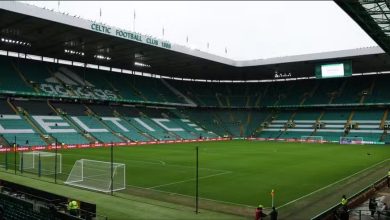Ranking the 25 Best Stadiums in World Football (2025)


Sign in to your GiveMeSport account

Summary
- From historic stadiums to those that were built in the 21st century, footballing grounds can catch the eye with their size and architecture.
- Wembley Stadium remains one of the most iconic stadiums in football, home to the FA Cup final and many of England’s matches.
- Real Madrid’s Santiago Bernabeu is ranked as the greatest football stadium in the world in 2024.
The beauty of football stadiums is that no two look the same. Each venue offers something different from every corner of the globe: a roaring atmosphere; state-of-the-art technology, or a rich archive of historic nights. Football’s ongoing need for bigger and better stadiums has resulted in some iconic infrastructures, unusual features and never-seen-before ideas that have become an unforeseen trend. The stadium of each team is vital to the image of the team that plays within its walls and also plays a big part in the community within which it’s built.
Here is a look at the top 25 stadiums in world football in 2024, featuring some of the biggest and best grounds, like Liverpool’s Anfield and Real Madrid’s Santiago Bernabeu.
Ranking factors
- Capacity: Amount of spectators able to watch the game inside the stadium
- How attractive the stadium looks: Distinct and unique features of a stadium
- How iconic the stadium is: Famous matches and players who have played at the stadium regularly
- The atmosphere generated by fans: Fan support from the terraces pushes the home team forward in big matches
| 25 Best Football Stadiums in the World | ||||
|---|---|---|---|---|
| Rank | Stadium | Team | Capacity | Year Built |
| 1 | Santiago Bernabeu | Real Madrid | 81,044 | 1947 |
| 2 | Tottenham Hotspur Stadium | Tottenham Hotspur | 62,850 | 2019 |
| 3 | Celtic Park | Celtic | 60,441 | 1888 |
| 4 | Signal Iduna Park | Borussia Dortmund | 81,365 | 1974 |
| 5 | Allianz Arena | Bayern Munich | 75,024 | 2005 |
| 6 | Estadio Azteca | Club America, Mexico | 105,000 | 1966 |
| 7 | Anfield | Liverpool | 61,276 | 1884 |
| 8 | Old Trafford | Manchester United | 74,879 | 1910 |
| 9 | Maracana | Fluminese, Flamengo, Brazil | 78,838 | 1950 |
| 10 | San Siro | AC Milan, Inter Milan | 75,923 | 1926 |
| 11 | La Bombonera | Boca Juniors | 57,200 | 1938 |
| 12 | Soccer City | Kaizer Chiefs, South Africa | 94,700 | 1989 |
| 13 | Camp Nou | Barcelona | 99,354 | 1957 |
| 14 | Wembley | England | 90,000 | 2017 |
| 15 | El Monumental | River Plate | 84,567 | 1938 |
| 16 | Wanda Metropolitano | Atletico Madrid | 70,460 | 2017 |
| 17 | Stade Velodrome | Marseille | 67,394 | 1937 |
| 18 | Mestalla Stadium | Valencia | 49,430 | 1919 |
| 19 | Estadio da Luz | Benfica | 64,642 | 2003 |
| 20 | Ibrox Stadium | Rangers | 50,987 | 1899 |
| 21 | Azadi Stadium | Esteghlal, Persepolis and Iran | 78,116 | 1971 |
| 22 | Johan Cruyff Arena | Ajax | 55,865 | 1996 |
| 23 | Parc des Princes | Paris Saint-Germain | 48,229 | 1897 |
| 24 | Stade de France | France | 81,000 | 1998 |
| 25 | Stadion Rajko Mitic | Red Star Belgrade | 51,755 | 1963 |
25 Johan Cruyff Arena
Home of: Ajax
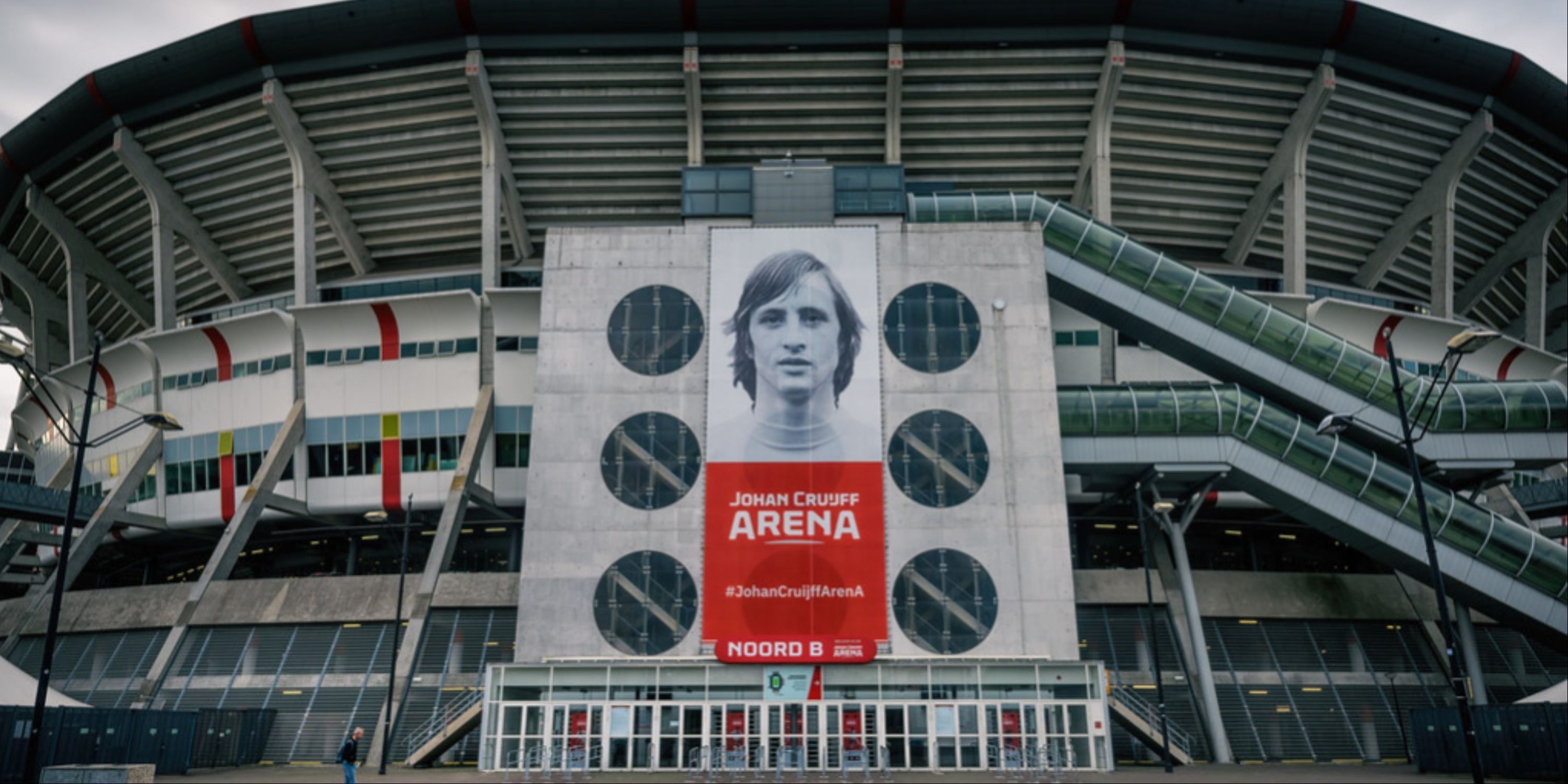
Located in Amsterdam in the Netherlands, the Johan Cruyff Arena is also a major European stadium. Inaugurated in 1997 on the ruins of the former De Meer stadium, which hosted Ajax matches for over 60 years, the Arena now has a capacity of 55,000 – in its football configuration.
It has been awarded category 4 status by UEFA, enabling it to host numerous international events, from the Champions League final to several matches in the 2000 and 2020 European Championships. And among the most spectacular matches to have been held there, some will remember the memorable encounter between Ajax and Tottenham in the second leg of the 2019 UEFA Champions League semi-final.
| Johan Cruyff Arena | |
|---|---|
| Location | Amsterdam, Netherlands |
| Capacity | 55,865 |
| Surface | Natural grass |
| Year Built | 1996 |
| Construction Cost | £116m |
| Record Attendance | 55,076 (Ajax – Excelsior Rotterdam, 24th April 2024) |
24 Parc des Princes
Home of: Paris Saint-Germain
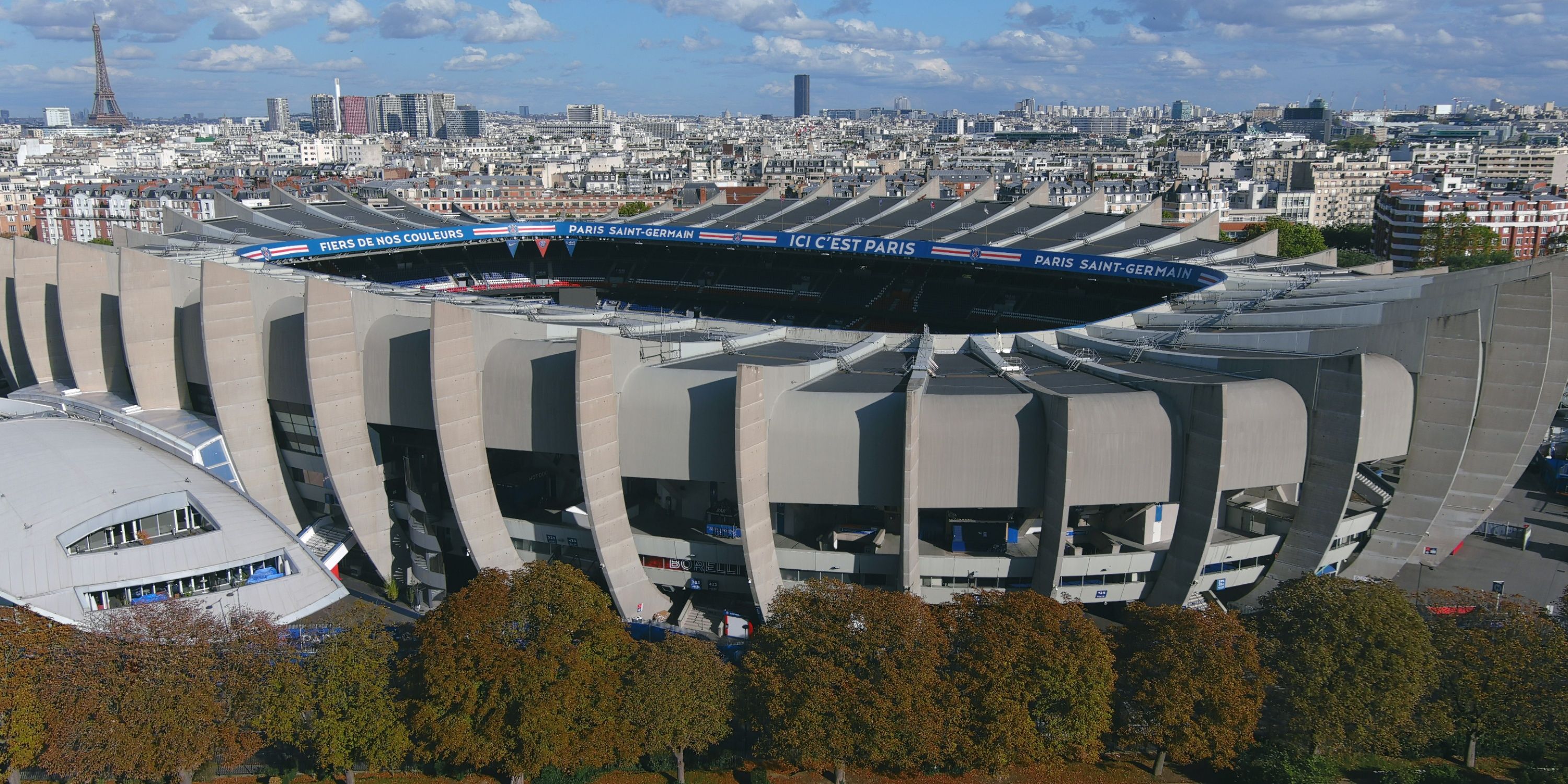
Paris Saint-Germain’s home ground is by no means the largest of all the stadiums on this list, but its history and recent events make it a worthy candidate. Located on the outskirts of Paris, overlooking the French capital’s ring road, the stadium was inaugurated in 1897 and is the oldest still in use in France.
It is a legendary stadium where some of the greatest players of all time have graced the pitch, both in the colours of the home team (Lionel Messi, Neymar, Kylian Mbappe, Ronaldinho, Rai, David Ginola…) and their opponents (Cristiano Ronaldo, Karim Benzema, Gareth Bale, Juninho…).
| Parc des Princes | |
|---|---|
| Location | Paris, France |
| Capacity | 48,229 |
| Surface | Natural grass |
| Year Built | 1897 |
| Construction Cost | £132m |
| Record Attendance | 50,370 (Rugby : France-Galles, 18th February 1989) |
23 Stade de France
Home of: France
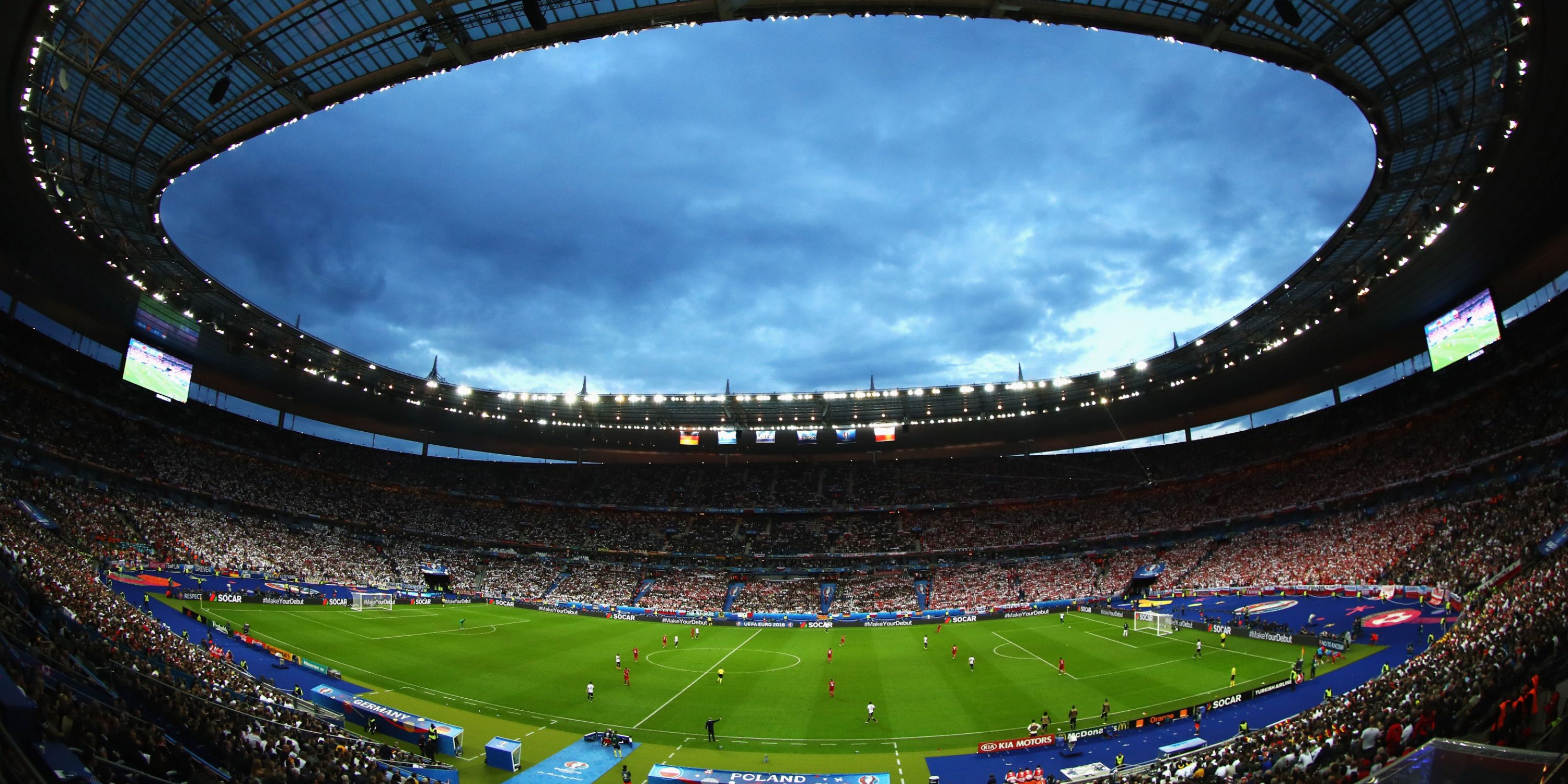
The fifth largest stadium in Europe, with a capacity of 81,000, the Stade de France is universally renowned for having been the venue for the 1998 World Cup final, the scene of Zinedine Zidane’s double header against Brazil. This is a stadium familiar with big-name matches, having notably been chosen to host three Champions League finals (2000, 2006, 2022) since its opening.
As well as playing host to the French national teams in various sports, the stadium is also the usual venue for the French Cup finals in football and the major national rugby cups. Certainly one of the great sporting venues in Europe.
| Stade de France | |
|---|---|
| Location | Saint-Denis, France |
| Capacity | 81,000 |
| Surface | Natural grass |
| Year Built | 1998 |
| Construction Cost | £303m |
| Record Attendance | 80,056 (Stade Rennais – EA Guingamp, 2009) |
22 Stadion Rajko Mitic
Home of: Red Star Belgrad
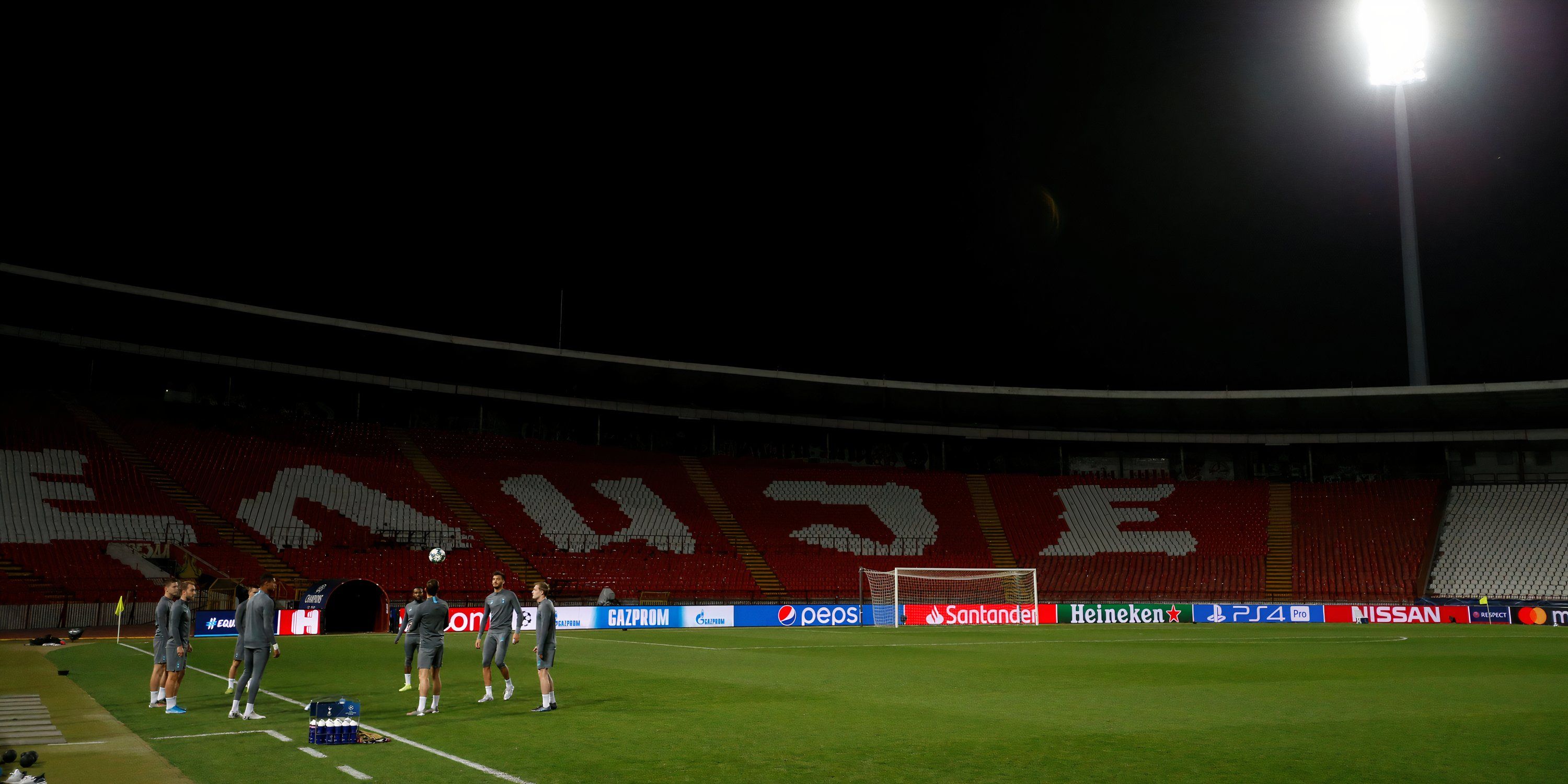
Including the Rajko Mitic stadium in this ranking is a bit of a departure from the beaten track. It is certainly not the best known of the stadiums listed here, nor is it the most beautiful in architectural terms, but it certainly has a soul that many of its counterparts would dream of being able to boast.
It is a stadium with just over 50,000 seats that is brought to life week after week by the passionate supporters of Red Star Belgrade, the resident club. All the more reason for its nickname of ‘Marakana’, a reference to another well-known stadium on the world footballing scene.
| Stadion Rajko Mitic | |
|---|---|
| Location | Belgrad, Serbia |
| Capacity | 51,755 |
| Surface | Natural grass |
| Year Built | 1963 |
| Construction Cost | Unknown |
| Record Attendance | 116,000 Crvena zvezda vs Ferencváros (23rd April 1975) |
21 Azadi Stadium
Home of: Esteghlal, Persepolis, and Iran
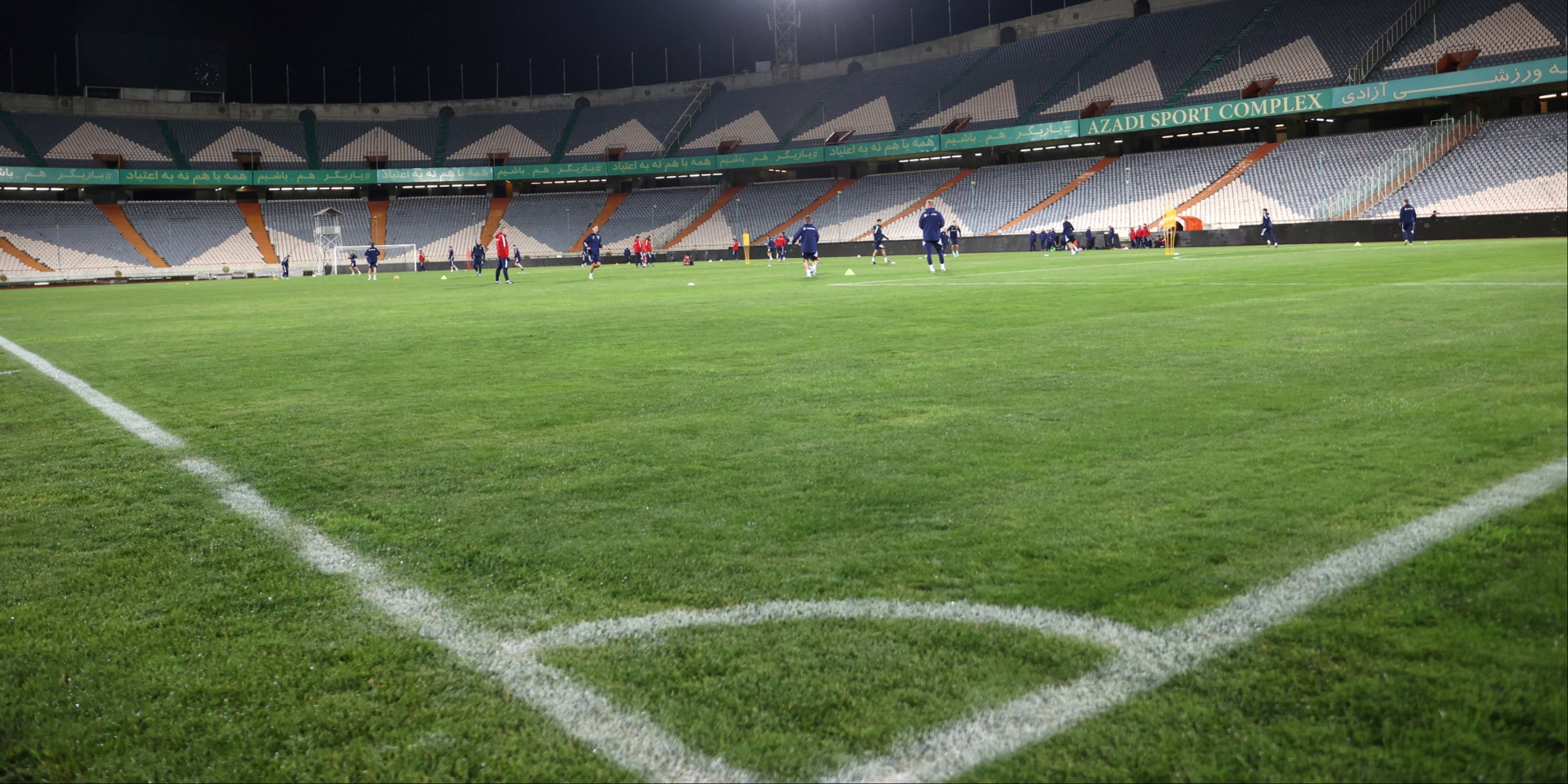
Renamed after the Iranian revolution to the English translation of ‘freedom’, the noise the Azadi Stadium can generate on match day is out of this world. Not only does it hold the record attendance for the biggest-ever crowd for a World Cup qualifier (a remarkable 130,000) but it houses other facilities, too – including a swimming pool.
Esteghlal and Persepolis – two clubs in Iran – play their home games inside the Azadi Stadium, and share that honour with the national team when necessary. The conversion to all-seater stadiums meant the overall capacity of the ground had to decrease, but over 78,000 fans can still attend matches there.
| Azadi Stadium | |
|---|---|
| Location | Tehran, Iran |
| Capacity | 78,116 |
| Surface | Artificial grass |
| Year Built | 1971 |
| Construction Cost | £343 million |
| Record Attendance | 128,000 |
20 Ibrox
Home of: Rangers (Scotland)
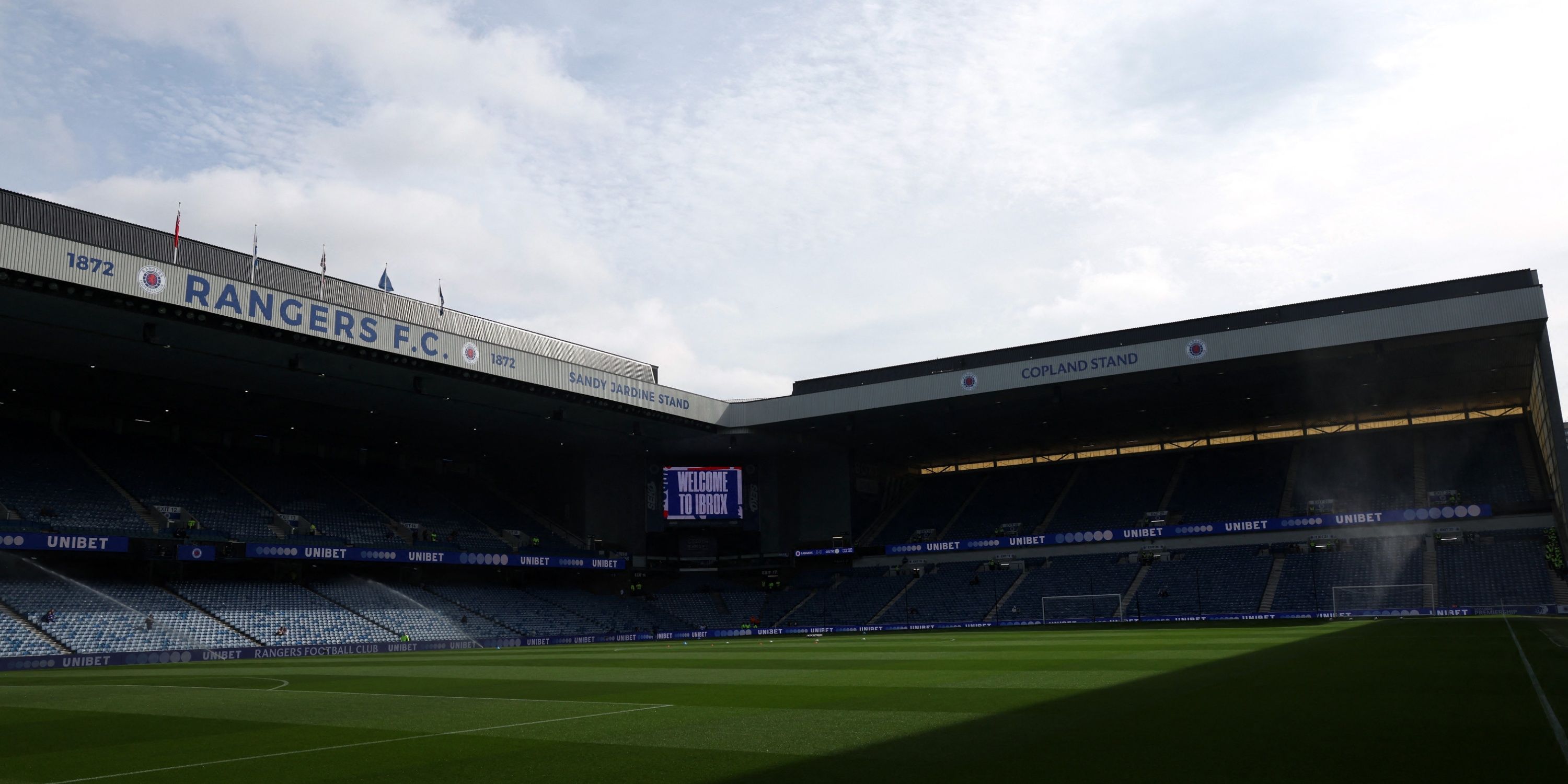
Irrespective of the club’s inability to knock Celtic off their pedestal, Rangers fans continue to spill into the stadium at every opportunity to cheer on their side – win, lose or draw. The club have survived some tough spells over the years, though the encouraging support and the fantastically Scottish stadium have kept the feeling of community alive and kicking in Glasgow.
Even after being relegated to the bottom of the football league in Scotland back in 2012, 50,000 Gers fans would still show up each week as the historic Scottish club made their way back up the divisions to once again become Premiership champions in 2021 under Steven Gerrard.
| Ibrox | |
|---|---|
| Location | Glasgow, Scotland |
| Capacity | 750,817 (all-seated) |
| Surface | Hybrid grass (Desso Grass Hybrid) |
| Year Built | 1899 |
| Record Attendance | 118,567 (v Celtic, 1939) |

Related
Top 20 Biggest Derbies in British Football [Ranked]
From the very depths of British football, there are some great rivalries to be seen…
19 Estadio da Luz
Home of: Benfica (Portugal)
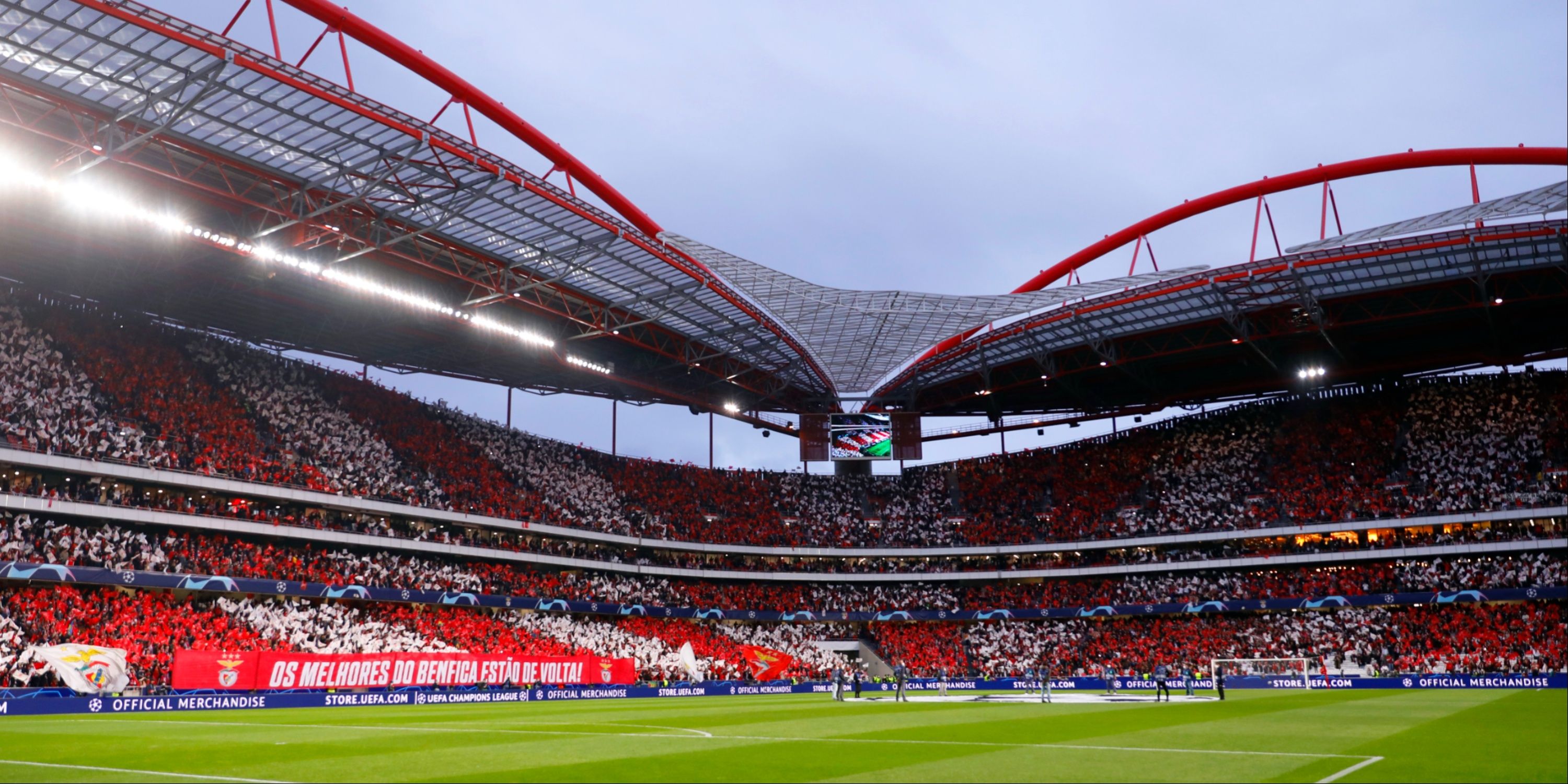
Portugal is a football-obsessed country, so when they had a fresh new stadium built ahead of Euro 2004, something special had to be done – and none in the country now compares to Benfica’s Estadio da Luz, which is capable of taking in 65,647 attendees.
Home to the country’s most illustrious outfit, it became an inspiration for Arsenal’s Emirates Stadium – though its tense atmosphere and exuberant match-going faithful arguably exceed those in north London. Only one ground on this list was built more recently than Estadio da Luz, and the modern feel of the stadium gives it a significant edge over many others.
| Estadio da Luz | |
|---|---|
| Location | Lisbon, Portugal |
| Capacity | 64,462 |
| Surface | Natural grass |
| Year Built | 2003 |
| Construction Cost | £139 million |
| Record Attendance | 65,400 |
18 Mestalla Stadium
Home of: Valencia (Spain)
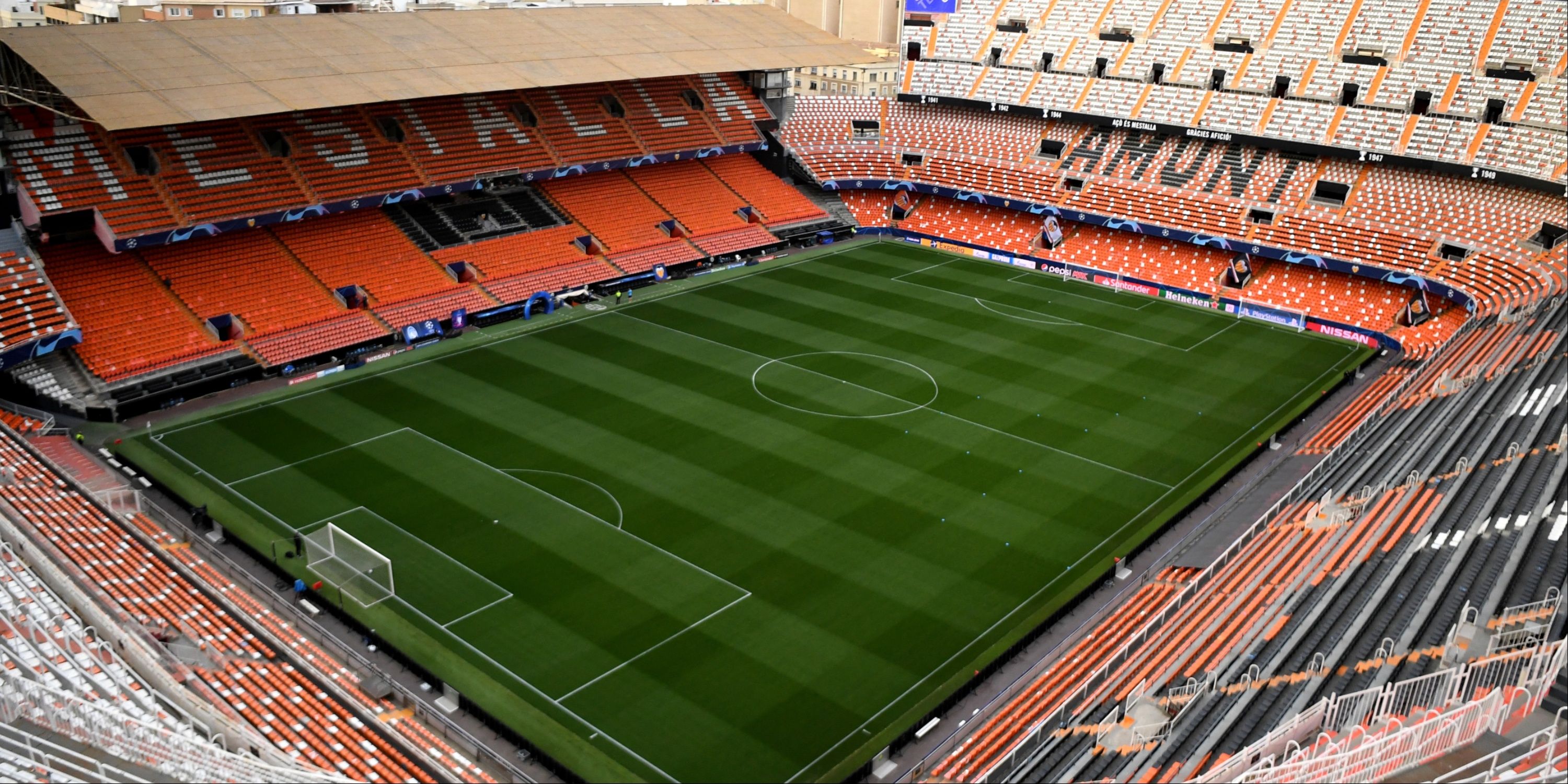
Well known for its steep banks of seats and the surrounding noise of 50,000 fans that encapsulate the ground, it seems as if Mestalla’s days are numbered. The Nou Mestalla – which first went under construction 16 years ago – was destined to be Valencia’s new stomping ground back in 2007, though delays have caused their famous old stadium to be home for that bit longer.
One thing’s for sure: it’ll be a sombre day when the club pack up their bags and move on. It’s unquestionably one of Spain’s most iconic grounds. There are only seven stadiums in Spain that can better the Mestalla’s capacity of 49,430. Supporters flock to the ground despite Valencia’s struggles to compete in La Liga.
| Mestalla | |
|---|---|
| Location | Valencia, Spain |
| Capacity | 49,430 |
| Surface | Grass/sand |
| Year Built | 1923 |
| Construction Cost | £1,631 |
| Record Attendance | 65,400 |
17 Stade Velodrome
Home of: Marseille (France)
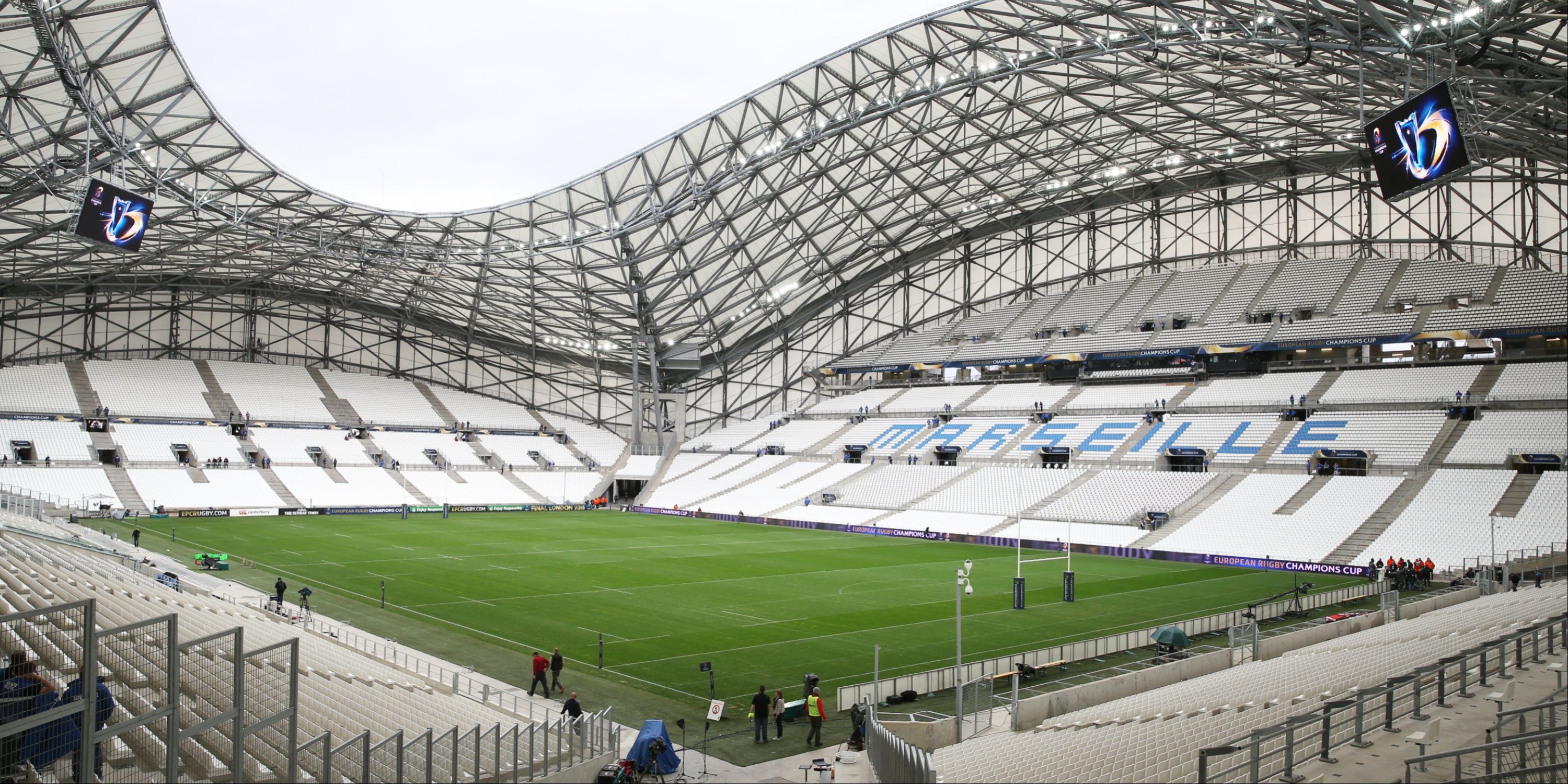
Forget the Parc des Princes in Paris. Initially erected in the 1930s, the Stade Velodrome – home of Marseille – remains the largest club football ground in France. The smooth shape of the roof cover adds a sprinkle of unlikeness to the stadium’s clever design and enhances another aspect of the ground: the elevating sound of the match-goers.
Not only is the uniquely designed ground an incredible destination for football to be played, but rugby games have also been held in the stadium, including during 2023’s World Cup tournament. Marseille haven’t been at their best for well over a decade now, but the Ligue 1 outfit do have a home befitting of a European juggernaut.
| Stade Velodrome | |
|---|---|
| Location | Marseille, France |
| Capacity | 67,394 |
| Surface | Hybrid grass (AirFibr) |
| Year Built | 1937 |
| Years renovated | 1984, 1998, 2014 |
| Record Attendance | 65,894 (v Paris Saint-Germain, 26th February 2023) |
16 Wanda Metropolitano
Home of: Atletico Madrid (Spain)
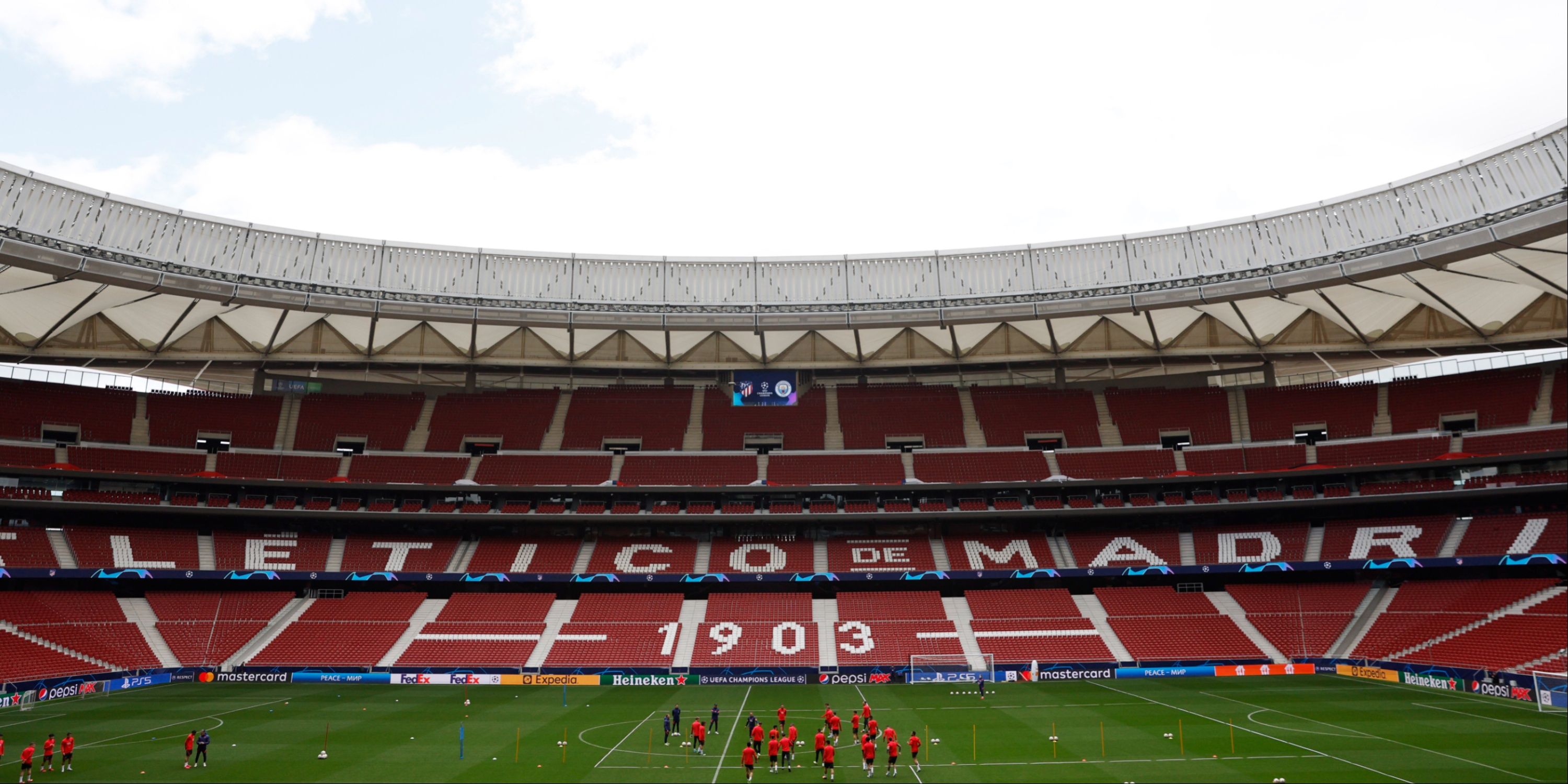
What’s really special about Atletico Madrid’s Wanda Metropolitano is that you feel very caved in and part of one community thanks to the overhanging roof above. It also doesn’t attract as many tourists as Barça or Real either, which means the atmosphere is among the very best that La Liga has to offer.
We still miss Atleti’s famous old ground, the legendary Vicente Calderon. That stadium, Atletico’s home between 1966 and 2017, was demolished several years ago. The Wanda Metropolitano was the site of Liverpool’s sixth European Cup success, as the Spanish capital was the venue of the 2019 Champions League final between the Reds and Tottenham.
| Wanda Metropolitano | |
|---|---|
| Location | Madrid, Spain |
| Capacity | 71,461 |
| Surface | Natural grass |
| Year Built | 1994 |
| Years renovated | 2017 |
| Construction Cost | £38.5 million (1994), £205 million (2017) |
| Record Attendance | 69,196 (v Inter Milan, 13th March 2024) |
15 El Monumental
Home of: River Plate (Argentina)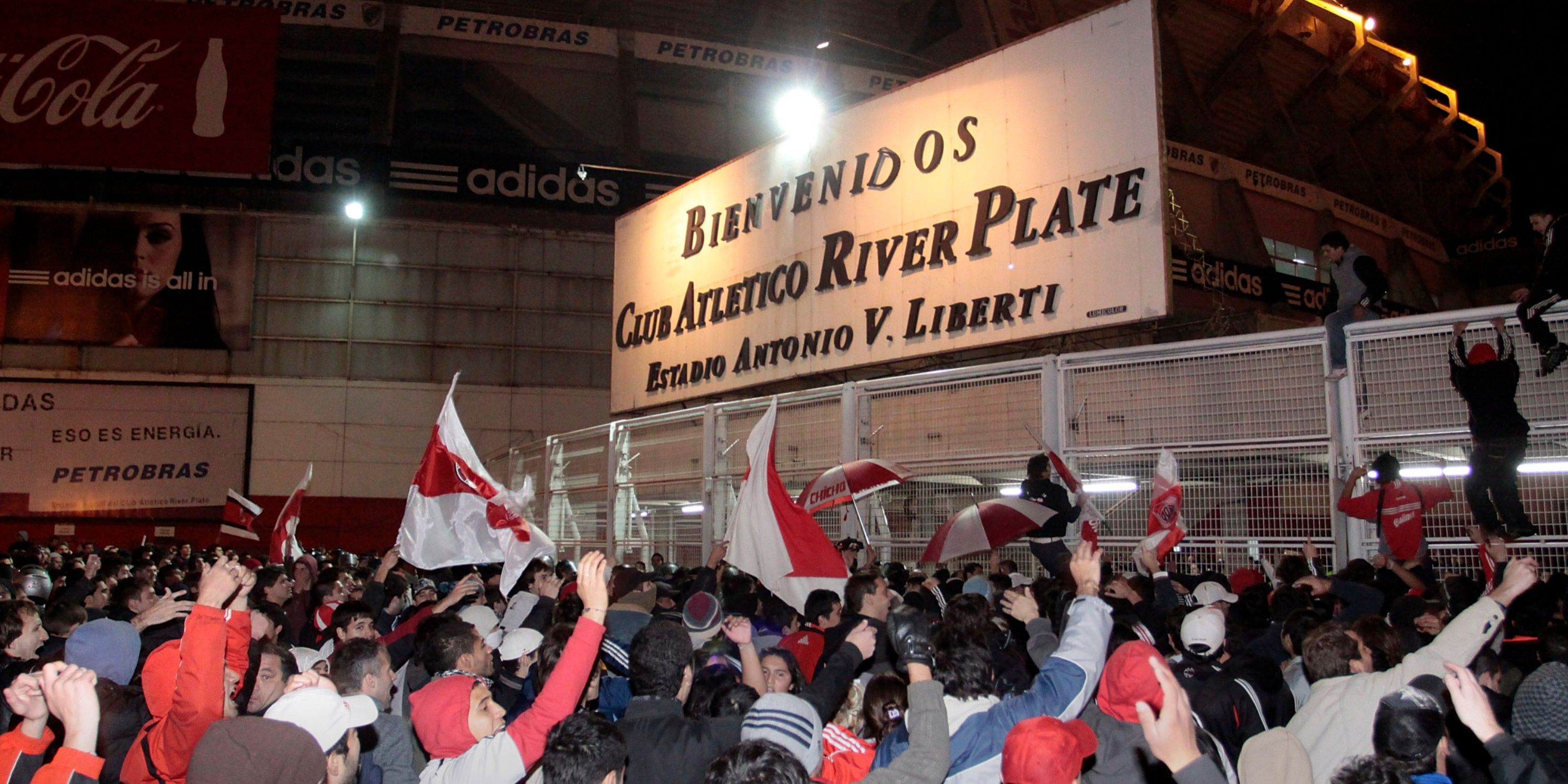
What credit could this ranking have enjoyed without including the legendary Monumental de Buenos Aires? A stadium whose location is important to note, given its common name in Latin America (its real name is the Estadio Monumental Antonio Vespucio Libertiest, named after a former president of the River Plate club). Opened at the end of the 1930s, its unique atmosphere makes it one of the most impressive stadiums on the planet, with thousands of football-related stories lining its bays. And although its capacity has been halved since its inauguration, its atmosphere remains one of the most exciting on the planet.
| El Monumental | |
|---|---|
| Location | Buenos Aires, Argentina |
| Capacity | 84,567 |
| Surface | Natural grass |
| Year Built | 1938 |
| Years renovated | 1978, 2020-2021 |
| Construction Cost | £36,4 million |
| Record Attendance | 100,000 (River Plate 2–0 Racing, 17 Aug 1975) |
13 Camp Nou
Home of: Barcelona (Spain)
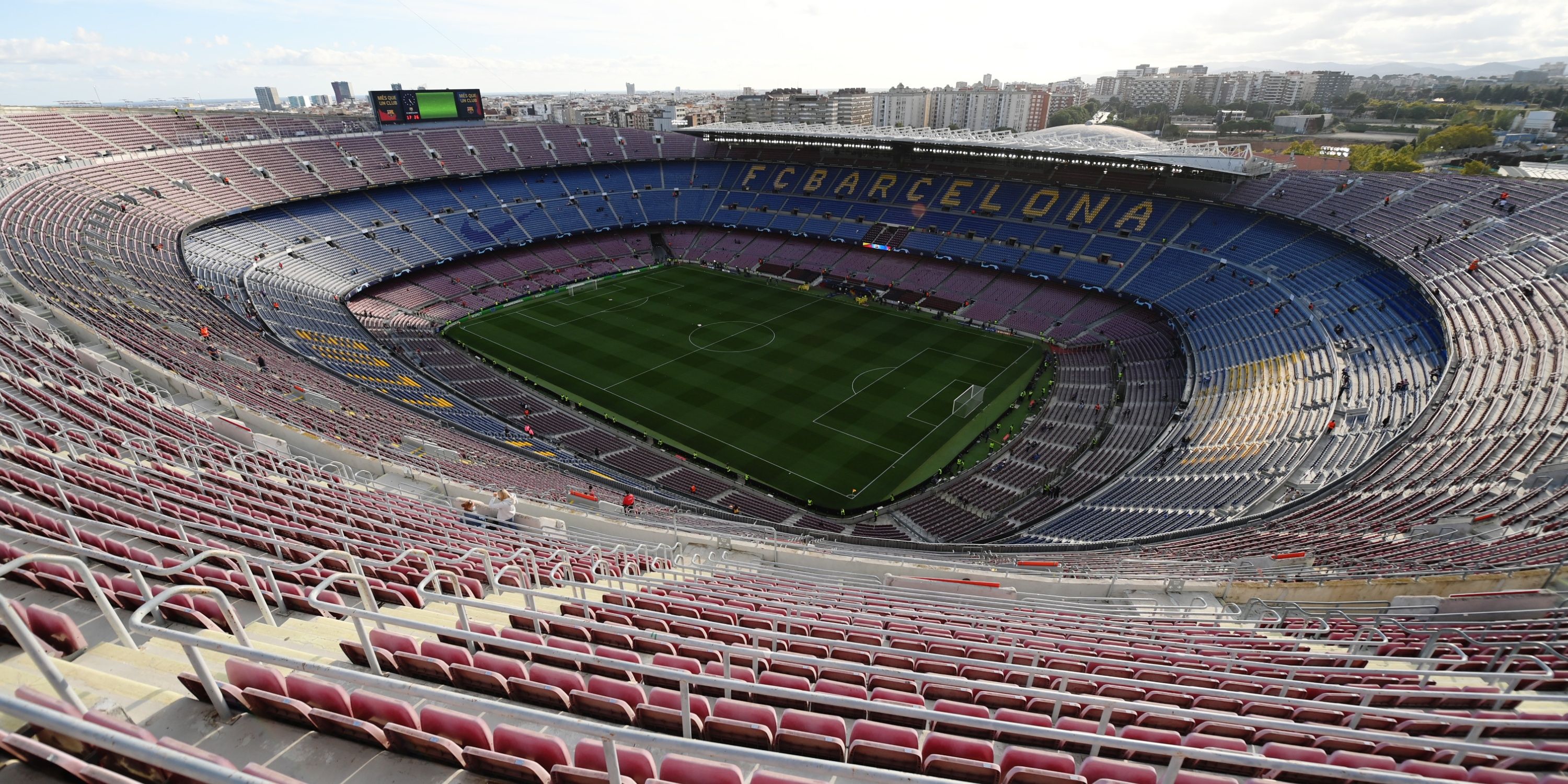
Currently under renovation itself, Barcelona are trying to mirror their arch-rivals’ (Real Madrid) progress by giving their home a much-needed lick of paint. The Catalan outfit’s well-documented motto ‘Mes Que Un Club’ is iconic in world football and is embroiled on the seats of the stadium.
Camp Nou’s capacity once surpassed a jaw-dropping figure of 120,000 for the World Cup finals in 1982 but was forced to be reduced due to changes in laws. But that staggering number of fans in attendance at one time is a testament to its history and how attractive it continues to be. Home to some of the most beautiful football ever played, this stadium will always occupy a special place in many football fans’ hearts around the world.
| Camp Nou | |
|---|---|
| Location | Barcelona, Spain |
| Capacity | 105,000 (expected) |
| Surface | Hybrid grass (GrassMaster hybrid grass) |
| Year Built | 1957 |
| Years renovated | 1982, 1994, 2026 (expected completion date) |
| Construction Cost | £1.5 billion (estimated upon 2026 completion) |
| Record Attendance | 83,500 (v Rangers, 1st January 1938) |
12 Soccer City
Home of: Kaizer Chiefs and South Africa
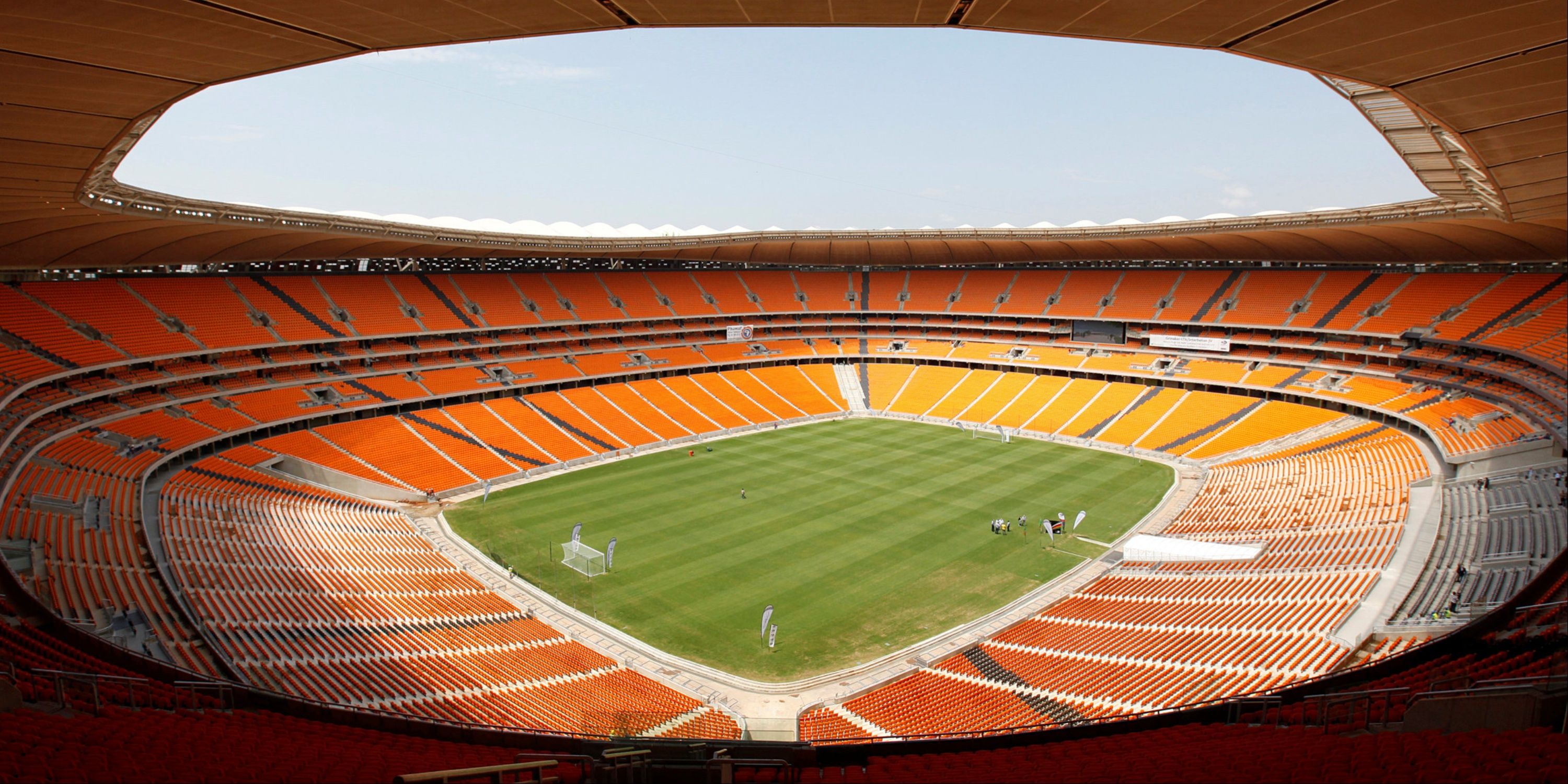
Opened in 1989 in Johannesburg, Soccer City was then given a lick of paint for the 2010 World Cup and now remains tall and proud as one of the best-looking stadiums in the world. Equipped with a huge capacity, the highest-ever attendance hit just shy of the 95,000 mark five years after it was unveiled for their new tenants, Kaizer Chiefs.
It will always be remembered for the sound of the vuvuzelas and Siphiwe Tshabalala’s thumping opening goal during the 2010 World Cup finals. The sight or even just the mere mention of this ground and that tournament will bring a warm feeling to the hearts of many.
| Soccer City | |
|---|---|
| Location | Johannesburg, South Africa |
| Capacity | 94,736 |
| Surface | Natural grass |
| Year Built | 1989 |
| Years renovated | 2007-2009 |
| Construction Cost | £347 million |
11 La Bombonera
Home of: Boca Juniors (Argentina)
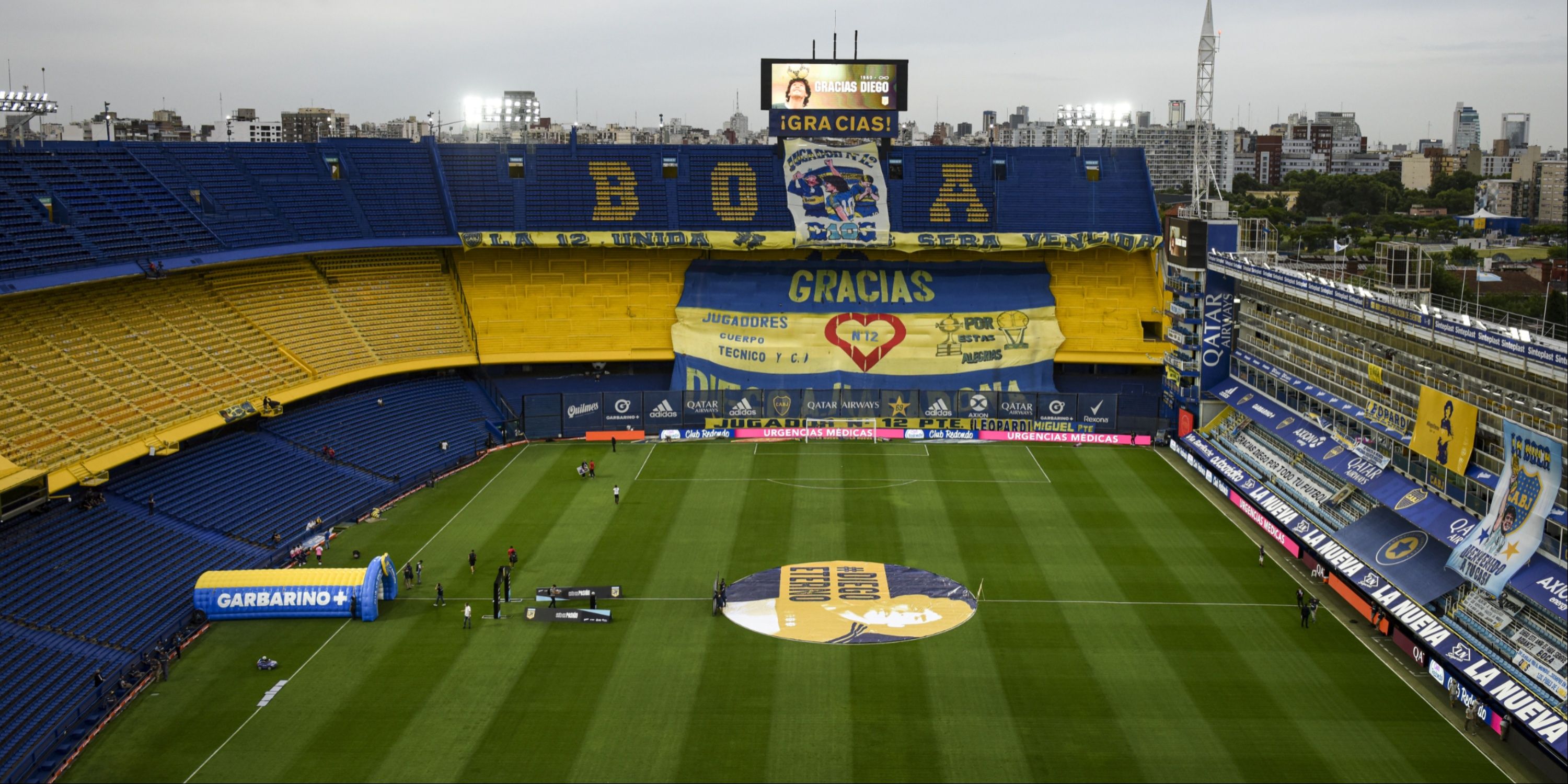
Argentina’s well-supported club, Boca Juniors, are known for a lot – one being their wonderful stadium, La Bombonera. What, however, sets this apart from the rest is the earth-quaking atmosphere that rises when a game is on. It’s like a living building – if that makes sense. The wonderful acoustics surrounding the pitch can even make the dullest of games worth attending.
Fun fact: the stadium is called La Bombonera, which means ‘Chocolate Box’ in English. Why? Because, like a chocolate box, the stadium goes straight up. The ground is not only brilliant on the inside, but the outside of the stadium is designed in the colours of the iconic team that play there – blue and yellow.
3:19

Related
Most Successful Clubs in World Football – Trophies and Honours
There are many highly decorated clubs in world football and the 23 sides to have amassed the most trophies have been listed.
10 San Siro
Home of: AC Milan and Inter (Italy)
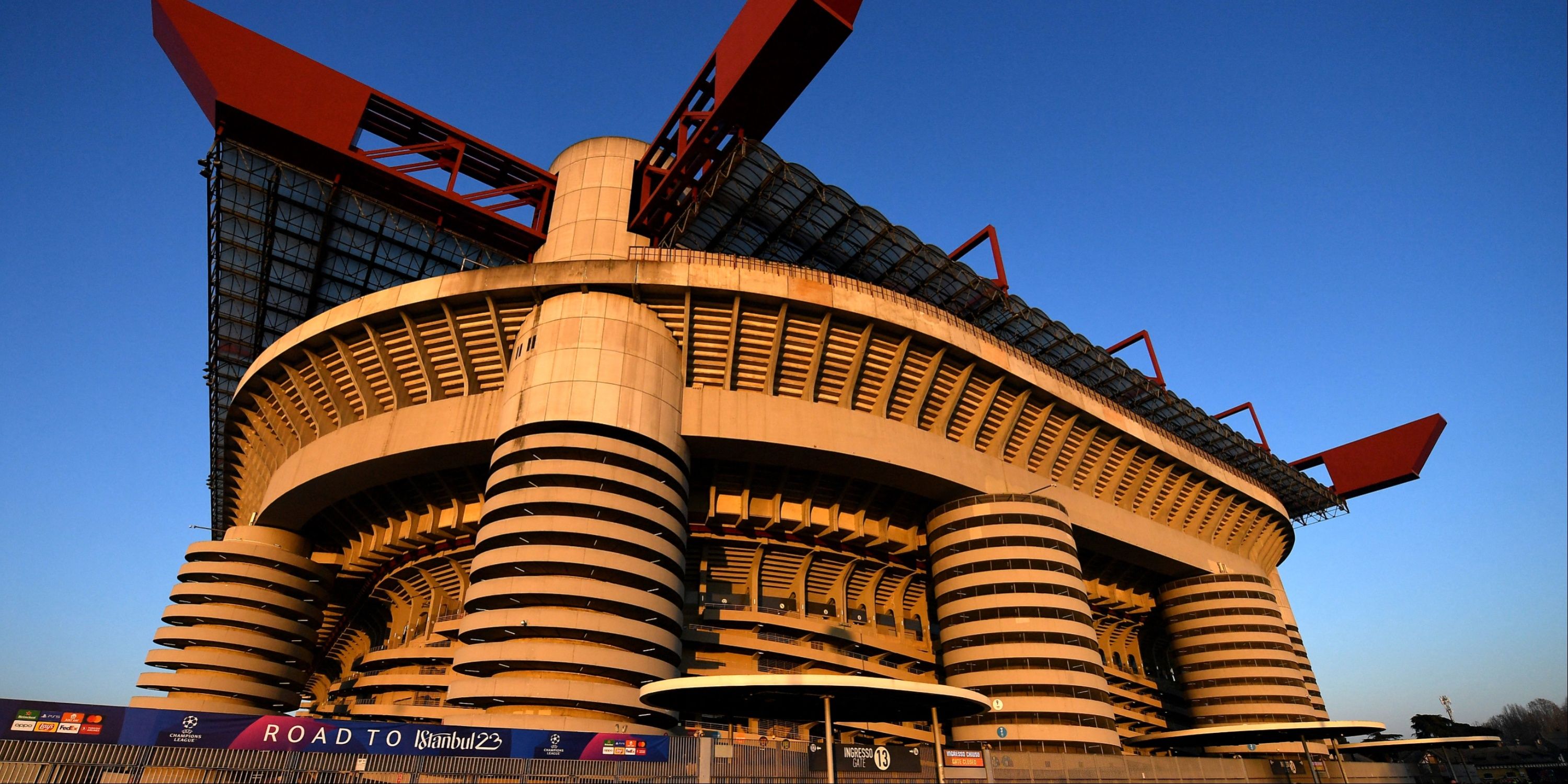
No aficionado or true ‘groundhopper’ can honestly say they’ve mastered the art without visiting the Italian capital’s famous ground: the San Siro, or the Stadio Giuseppe Meazza to give it its full name. Home to two football behemoths AC Milan and Internazionale, it is easily one of the most revered stadiums in the world of football.
What readers may not realise is that it is designed in a way to ensure that every match attendee has the best possible visibility – no matter where they find themselves sitting. It’s reassuring to know that the experience of the crowd was taken into consideration when designing one of the most recognisable grounds on the planet.
| San Siro | |
|---|---|
| Location | Milan, Italy |
| Capacity | 75,817 |
| Surface | Hybrid grass (GrassMaster) |
| Year Built | 1926 |
| Years renovated | 1935, 1955, 1987-1990, 2015-2026 |
| Stadium Owner | AC Milan (1926-1935), Municipality of Milan (1935-present) |
9 Maracana
Home of: Fluminese, Flamengo, and Brazil
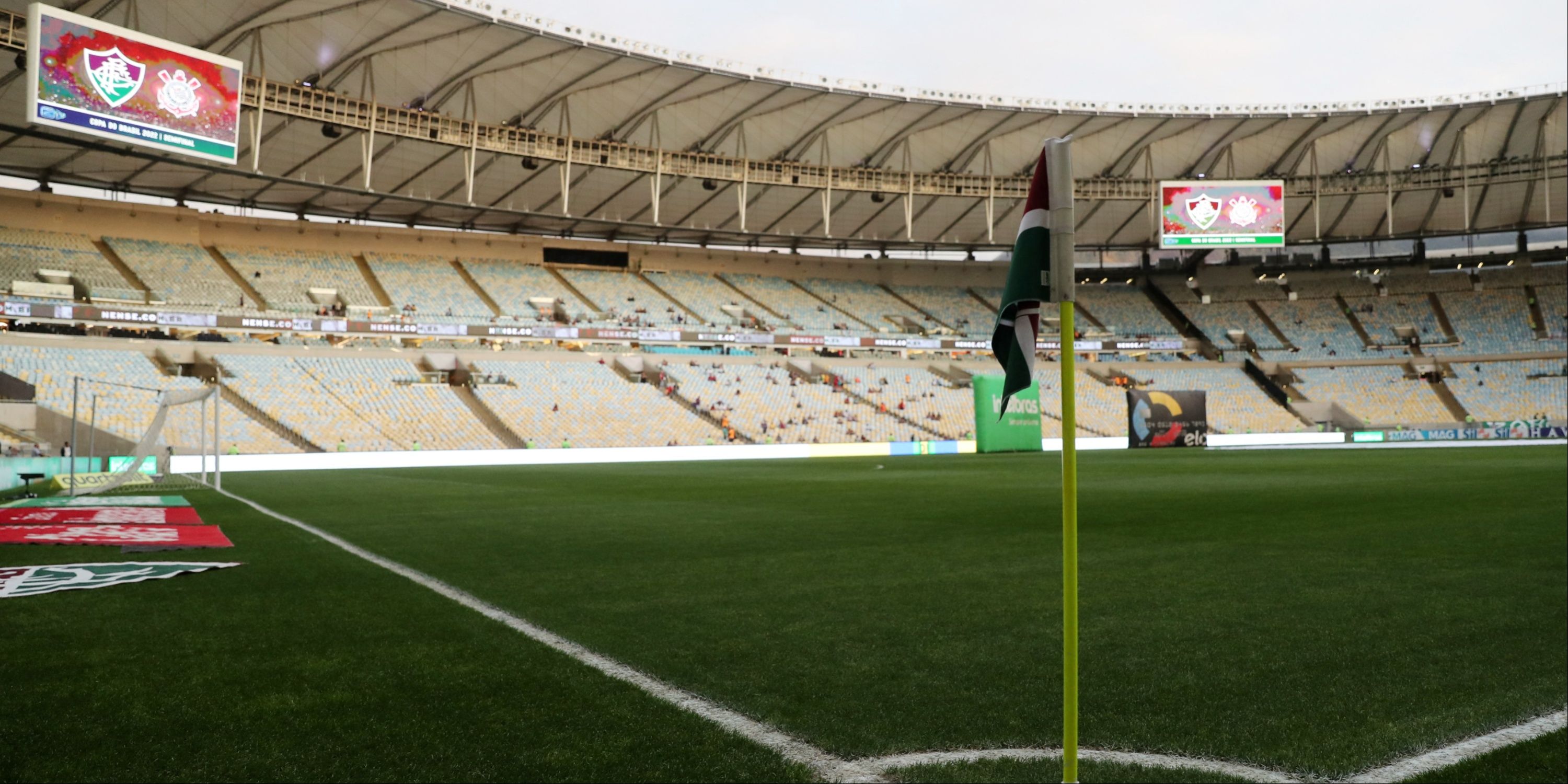
Home to the Brazilian national team, the Maracana has seen some outrageous talent step foot on the green of the stadium over the decades. Amazingly, 199,854 people embraced the tight-packed squeeze during Brazil and Uruguay’s World Cup group stage match back in 1950 and has been remembered ever since as one of the most iconic in the sport’s history.
Fluminese and Flamengo play their home games in the Maracana, which is also known as Estadio Jornalista Mario Filho. These are two of the best-known and biggest clubs in South America, and they ensure this wonderful stadium is put to good use when the national team aren’t in action.
| Maracana | |
|---|---|
| Official name | Estadio Jornalista Mario Filho |
| Location | Rio de Janeiro, Brazil |
| Capacity | 73,139 |
| Surface | Natural grass |
| Year Built | 1950 |
| Years renovated | 2000, 2006, 2013 |
| Record Attendance | 199,854-210,000 (disputed) (Uruguay v Brazil, 16th July 1950) |
8 Old Trafford
Home of: Manchester United (England)
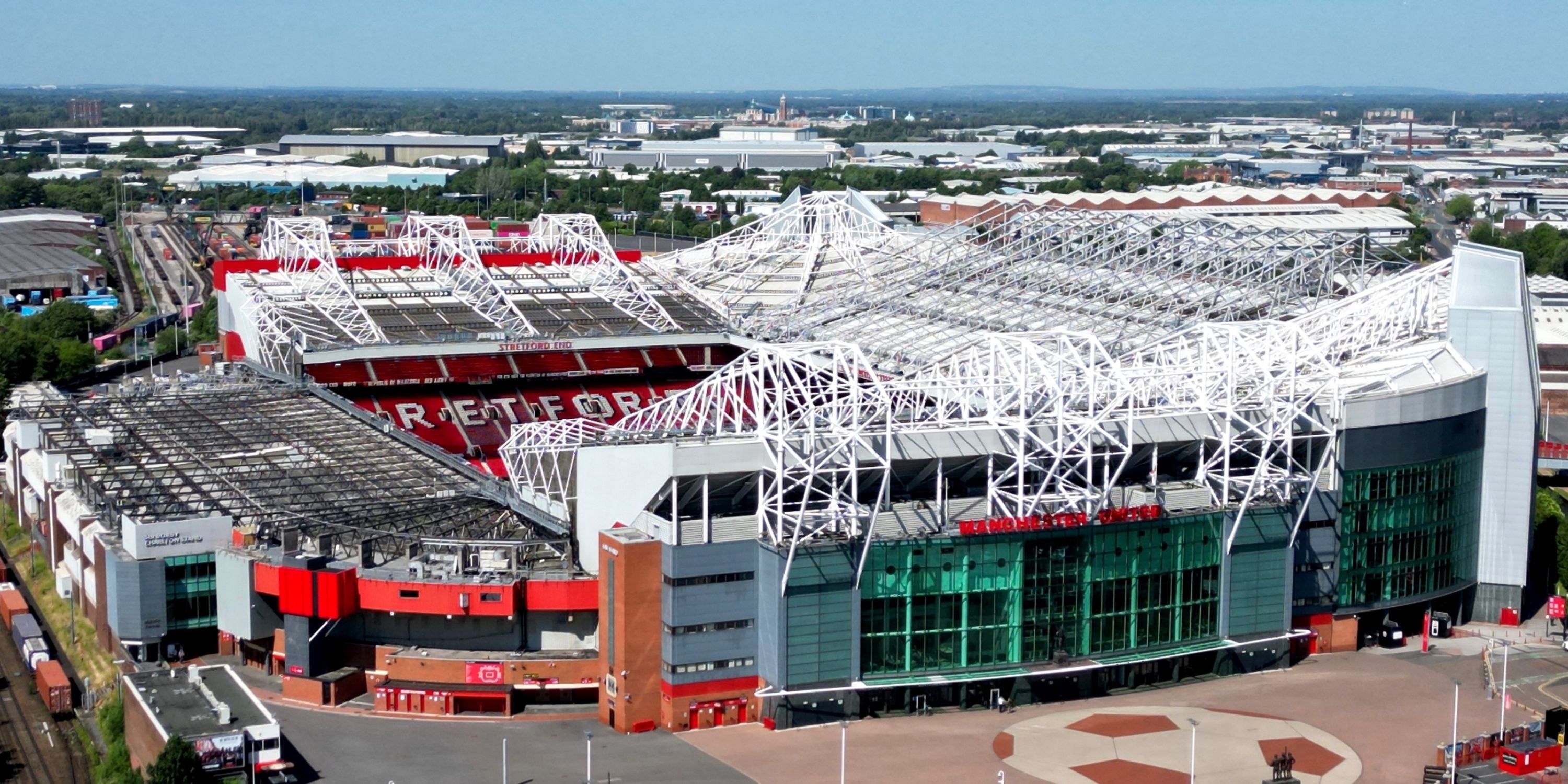
Manchester United’s famous ground, Old Trafford, is up there alongside football’s most evocative names, with the Stretford End as the club’s pride and glory. And although its tenants are divided about whether its leaky roofs and lack of care are of concern, there’s no doubt that ‘The Theatre of Dreams’ is truly magnificent.
Will it improve over the coming years? Well, the club’s controversial owners, the Glazer family, have paid little attention to the stadium since 2005. Sir Jim Ratcliffe’s purchase of a minority stake could see the stadium prioritised going forward. However, the British billionaire is said to have plans to build a new ground for the Red Devils to call home. Who could imagine Manchester United playing anywhere other than Old Trafford?
| Old Trafford | |
|---|---|
| Location | Trafford, Greater Manchester, England |
| Capacity | 74,310 |
| Surface | Hybrid grass (Desso GrassMaster) |
| Year Built | 1910 |
| Years renovated | 1941, 1946-1949, 1951, 1957, 1973, 1995-1996, 2000, 2006 |
| Record Attendance | 76,962 (Wolverhampton Wanderers v Grimsby Town, 25th March 1939) |
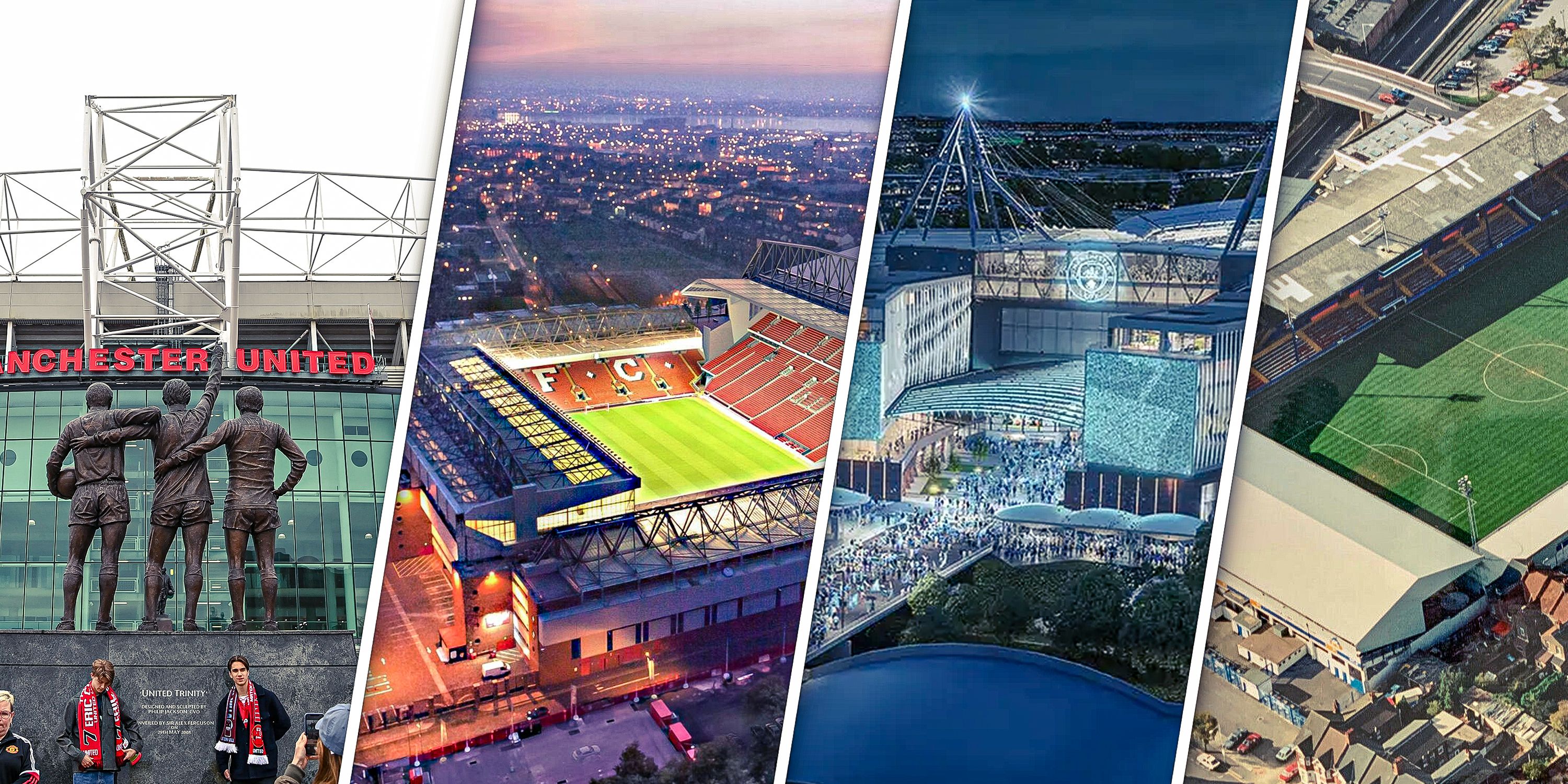
Related
All 20 Premier League stadiums ranked by fans on which has the worst atmosphere
Fans have ranked each Premier League stadium based on atmosphere, with a newly promoted team being voted as the worst.
7 Anfield
Home of: Liverpool (England)
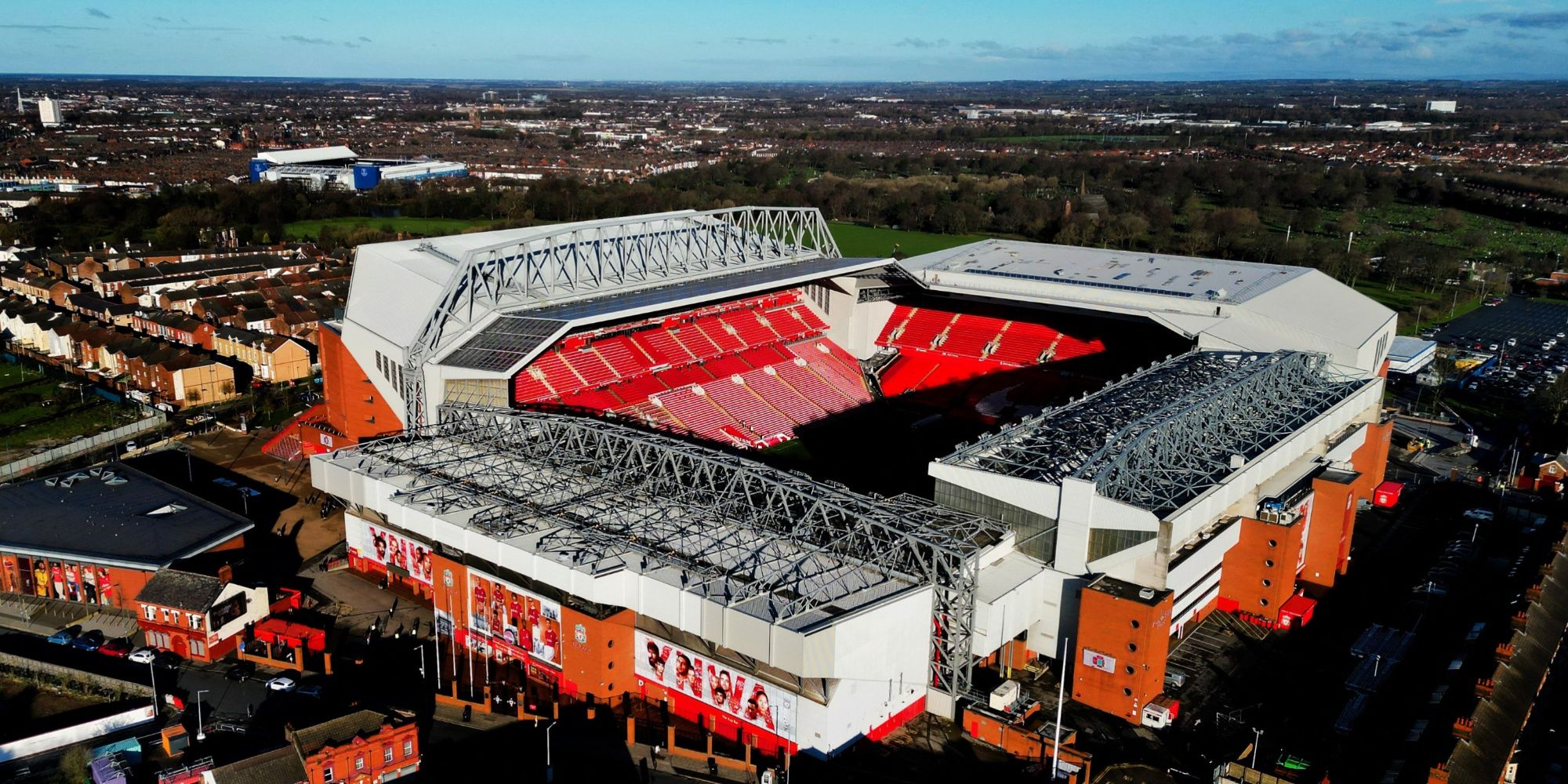
Though not exactly breathtaking in size, the revered and respected Liverpool fans that sit within the walls of Anfield are known to instill fear into any opposition – no matter how big or small. Whether it’s the “This is Anfield” sign located in the tunnel or the famous “You’ll Never Walk Alone” chant, it’s the little things that make Liverpool, Liverpool.
Fenway Sports Group, the owners of the Merseyside club, have done a lot of work on the famous ground to grow the capacity to over 60,000. The newly constructed Anfield Road Stand looks magnificent and is now open for business. Those famous European nights at Anfield could get even louder going forward.
| Anfield | |
|---|---|
| Location | Anfield, Liverpool |
| Capacity | 61,276 |
| Surface | Hybrid grass (GrassMaster) |
| Year Built | 1884 |
| Years renovated | 1895, 1903, 1906, 1928, 1957, 1963, 1973, 1982, 1992, 1994, 1998, 2014-2016, 2021-2023 |
| Record Attendance | 61,905 (v Wolverhampton Wanderers, 2nd February 1952) |
6 Estadio Azteca
Home of: Club America and Mexico
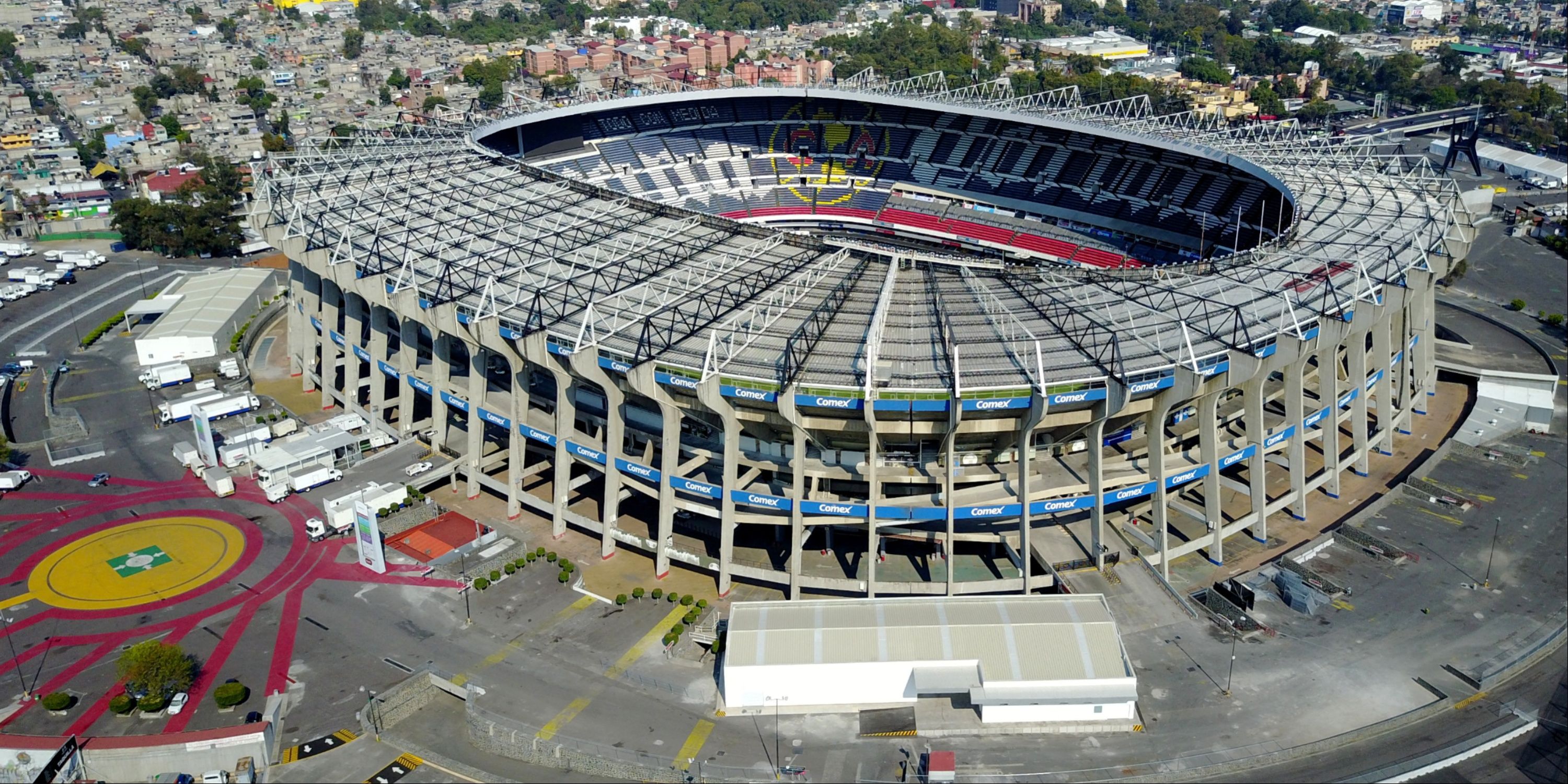
Football’s third-largest stadium had to get a mention, right? 105,000 fans are able to pick up tickets to attend the Mexican-based ground and there were many in attendance to watch Diego Maradona’s famous brace against England during the 1986 World Cup.
Scene of one of the most talked about matches in history, Maradona scored his ‘Hand of God’ goal and the ‘Goal of the Century’ within the space of four unforgettable minutes. For these reasons, it will always be etched into the minds of football fans across the globe. The Mexican national team and one of the biggest teams in the country, Club America, ply their trade inside Estadio Azteca.
| Estadio Azteca | |
|---|---|
| Location | Coyoacan, Mexico City |
| Capacity | 87,523 |
| Surface | Kikuyu grass |
| Year Built | 1910 |
| Years renovated | 1986, 1999, 2013, 2016 |
| Record Attendance | 119,853 (Mexico v Brazil, 7th July 1968) |









